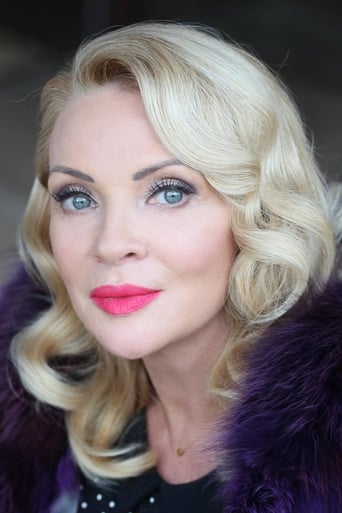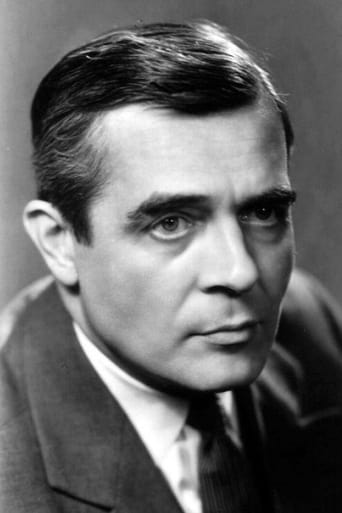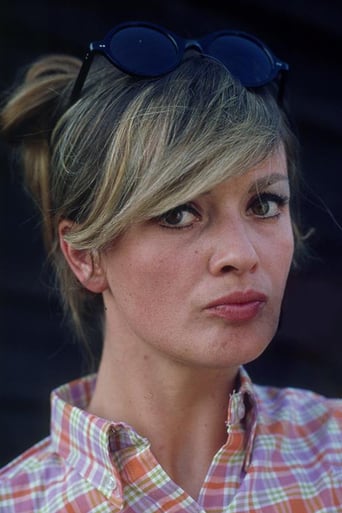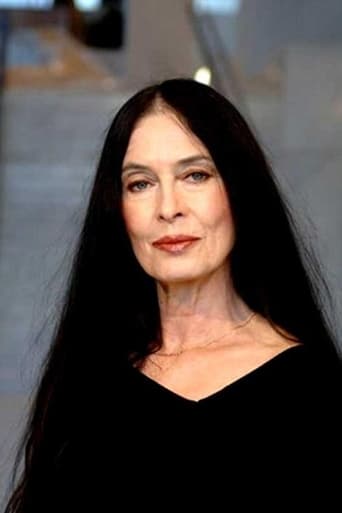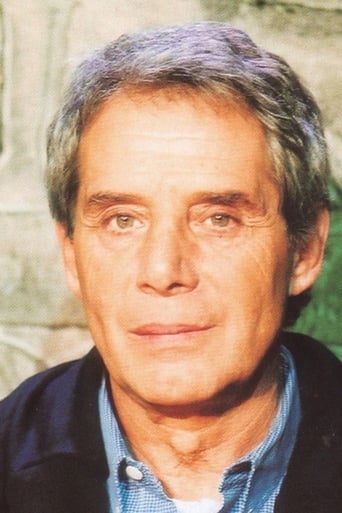Karry
Best movie of this year hands down!
Stometer
Save your money for something good and enjoyable
Exoticalot
People are voting emotionally.
Kaelan Mccaffrey
Like the great film, it's made with a great deal of visible affection both in front of and behind the camera.
morrison-dylan-fan
With Halloween coming up,I started to search around for Horror DVDs that a friend could watching during Halloween.Taking a look at titles that a DVD seller had recently tracked down,I was delighted to spot a Czech New-Wave Horror adaptation of Beauty & the Beast,which led to me getting ready to look into the eyes of a New- Wave Beauty.The plot:Being unable to afford the cost of two weddings being held for 2 of his 3 daughters,a widower decides to try and sell a portrait of his late wife in order to raise some money. Traveling around the darkened woods,the widower discovers a decaying mansion.Entering the mansion,the widower finds the owner hiding in shadows,and offering him food and mountains of gold.Just before he leaves,the widower decides to walk round the mansion gardens (what good timing!)and to pick a white rose to give to his third (and not engaged) daughter Julie.Furious,the stranger dives out of the shadows and reveals himself to be a man who has been cursed to look like a beast. Angry over one of the white roses being taken,the beast tells the widower that he can only go free if one of his daughters is able to take his place.Turning down the option,the widower gets the beast to give him one last chance to say goodbye to his daughters.Learning of the deal her dad has made,Julie secretly takes his place by running off towards the beastly sight.View on the film:Sending Beauty & the Beast to the Czech forest,co-writer/ (along with Ota Hofman and Frantisek Hrubín) director Juraj Herz and cinematographer Jirí Macháne grind the film down with a wonderfully decayed appearance,with the rotting face of the beast being matched by the decaying reds and golds of what was once his lavish mansion.Placing the viewer in the mind of the beast,Herz opens up every corner of the mansion with superbly stylised first person tracking shots from the beast,which along with giving the film a light fairy tale atmosphere,also subtly reveals the beast's developing trust and "closeness" towards Julie.Opening the title with animals getting butchered, (talk about easing the viewer in!) the screenplay by Herz/Hofman and Hrubín brilliantly cross rustic Horror with rich Gothic romance.Despite the face being hidden by some splendid special effects,the writers brilliantly explore the psychological monsters lurking inside beast,thanks to inner-monologues exposing the beast's raw fears and weaknesses.Despite lurking in the shadows for a good part of their interactions,the writers give the blossoming romance between the beast and Julie a surprisingly sweet nature,with Julie's encouragement for the beast to step out of the shadows being delivered in an excellent,delicate manner,as the beast starts to Czech out the beauty.
chaos-rampant
This is such a strange film. Nominally a Beauty and the Beast rendition (the title translates to Virgin and the Monster), it is introspective wandering through dreams. It is both rich in what we see of dreams and silly. The filmmaker (Juraj Herz, also responsible for Cremator) juggles various moods, sombre elegy to medieval fairytale.As you watch it, it may strike you as both obvious and muddled, obvious because its fantasy is of the schematic sort, with onedimensional characters like the 'kindly father', 'innocent maiden', 'petty step- sisters'. The monster looks silly. So it may seem like it's not worth the effort of bridging the distance to what is going on behind the simplistic surface.However, scrap all that and this may get to you. It got to me, at least for a while. It isn't about just the Gothic mood. Its appeal is a series of interleavened dreams, but you aren't always sure who is dreaming, if sometimes more than one dreamer, and when one bleeds into the next, so you drift with it.Consider this as the story. A rich merchant father has to marry off his daughter in a marriage of convenience, the anxiety this causes to both is at the root of the film. It isn't in the film as such, but you will get something of the sort if you conflate the different threads.From the father's perspective, this means sending off his daughter to live with a 'monster' in his dark lair, from her perspective, it means going to live alone with a stranger, her fate sealed. This translates in several scenes of hallucination, all of it wonderfully visual—the ominous destruction of the merchant wares in the woods, the father's deal with the monster for the girl, the girl's gilded dream of a handsome prince (inside a coffin) and half-frightful, half-anticipatory wandering in the mansion hearing just his voice.The plucking of roses as loss of purity is a central motif.It's silly again as we shift to the monster's soliloquies of what it means to be human, but that is because we don't have a surrogate for him in the level of reality, he solely exists inside the fantasy as the abstract ogre made human by her touch. The Czech often favor a juvenile theatricality.But there's something else that is cool. Now so far all points to constructed realities, dreams as tailored emotional space. The girl wonders if she's not imagining everything, in one scene she visits as ghostly observer her sisters' wedding, no one can see her.Here's how the filmmaker adds layers to the monster. He has conflicting sides to him, two voices that ponder on whether to kill or spare the girl. The 'evil' voice is disembodied, in his mind. This 'evil' narrator is coming from the camera, you'll notice this is linked with subjective shots of the monster as it kills the wench in the woods, roams with a candelabra and early on 'stages' the frightful visit of the father. It's the filmmaker's hand (as internal consciousness shaping the story) pushing for horror, very cool to see.So as with many films of this sort, the film becomes more disposable the more you settle on what the story is supposed to be. It fits somewhere between Lynch, Hourglass Sanatorium for nested doll-worlds, Jean Rollin's wandering and Valerie's Week of Wonders.I listed the films (and makers) in descending order of preference, which for me is the order by which, as you peel away layers, you get less and less of what you thought is there, it opens up, instead of a single solid core. Angels dancing instead of a pin's head.So if you want a cryptic story disguised to mean something, this is cryptic but as with Rollin and Valerie it makes rather simple sense. At the same time, it is dissonant enough once you disengage from story to captivate. I will see if I can track down more from this guy, he may deserve a place in my nightly viewings.
vainoni
So, "Panna a Netvor"--"Beauty and the Beast" for English-speakers, though a more accurate translation is "The Maiden and the Monster." It's a more horror-tinged version of the tale, and is really not for little kids.Fairy tales seem to specialize in magical transformations: beasts into humans , paupers into princes and princesses, etc. But look again and you'll see that the transformations aren't really transformations--Cinderella, for example, was always a princess on the inside; she just had to be recognized as one. So what many fairy tales do is show things as they really are--or, at least, as they should be. This version of "Beauty and the Beast" shows things as they are *and* how they should be, and works toward bridging the gap, making it more modern than your average fairy tale.When the story starts, things as they are are pretty horrifying: our "Beast" (Netvor) is not a prince--he is never called one, he lives in a mansion and not a castle, and though he has servants they are monsters similar to himself. He is partially a bird and partially a beast (which is represented by both his body and a sinister voice that tells him to kill things, including our "Beauty," Julie). His little voice tells us that he's been fully transmogrified for at least twenty years.It's usually pretty hard to make any "Beauty" interesting, since she merely exists to be lovely and good so that the "Beast" figure can be saved, but this movie gives it a go. As in the original fairy tale, she is the daughter of a merchant, not an inventor (as in the Disney version); her two selfish, money-obsessed sisters are slated to be married to other merchants, and their father has sunk everything into buying things for their respective weddings. Unfortunately, the goods need to travel through the Black Forest, and the people driving the carts stumble across one of the Beast's trip wires. So all the merchant's property is destroyed, and he and his three daughters are destitute. The merchant goes off with their mother's portrait to sell. The two selfish daughters want gold and gems, but Julie will accept a wild rose (his suggestion, not hers). He *also* needs to go through the Black Forest (WHY? WHY?!), but our Beast has gotten his fill of violence from the destruction of the merchant's goods, so his human side is slightly dominant over his beast one. When the merchant stumbles into the house, the Beast has his servants feed him and give him wine, and he even lays out jewels on the table for the merchant to take in exchange for the portrait. (These gems are not at all valuable to the Beast--magic works according to strange rules in this movie.) Then the merchant takes one of the Beast's roses, and you *know* what happens then. :) When he returns with shiny things, the two older sisters are thrilled, even after the merchant tells them he needs to die because he took a rose for Julie. Unless, of course, one of the three daughters will go back to the Beast in his place (that's always part of the deal)...and there's Julie, riding off into the forest. Notice, though, that the merchant said nothing about a beast.Anyway, Julie shows up at the manor, drinks some suspicious-looking wine (poured by the gremlin who lives in the chandelier) and passes out. She then has a dream of being shut up in a coffin (alive) and rescued by (we presume) the Beast in human form. While she sleeps, the Beast stands over her and struggles with the little voice that wants him to kill her and drink her blood. Finally, he runs off into the woods and kills a deer.When Julie wakes up, she's alone. While she's sitting in front of the fire, the Beast shows up behind her, ordering her not to turn around, and he interrogates her. She tells him why she's there. He asks if he can visit her the next night, and the cat-and-mouse chase begins. Believe it or not, the little voice is still pretty adamant about killing her. So her days go on--every morning and evening, the table seems to set itself, and she has pretty jewels and dresses to wear, and life is good. The Beast visits her at night, but only briefly.Now I need to back up a bit. Magic, in this movie, is dependent on two things: the worth of the object to be transformed and how much the magic-maker/receiver deserves that object. The Beast's gremlins serve him less because he deserves it and more because his force compels it, but it's the same general principle. The gems that the Beast gave Julie's father were created only because he gave up the portrait of his wife--the sentimental value transformed everyday, broken-down objects into precious gemstones, because the merchant deserved them for his sacrifice. Julie's things are beautiful because she deserves them. When she goes home, her sisters insist on "borrowing" (read: stealing) her things, but as soon as the one sister tries on her dress, it turns to rags, and as soon as the other sister tries on her necklace, it turns to mud. Why? Because they don't deserve them. There is a strong element of justice in a lot of fairy-tales, but the theme does not usually play out quite so strongly in "Beauty in the Beast" (which is usually skewed toward *not* judging, based on appearances or anything else).The Beast is made human due to the same general principles of this magic. He works toward deserving happiness. Julie is an active agent, but he is (as Michelangelo said) the marble and the sculptor--the substance, and the worker of that substance.The end is a reprise of Julie's earlier dream, and is very '70's and a little tacky. Ah well.This is probably my favorite version of the fairy tale. Recommended.
Jiri Kacetl
Although I doubt that this film was ever on in the U.S., since I live in the country where it was shot, I can warmly recommend it to anyone who loves fairy tales taken in a harsher and darker manner. The atmosphere of the film is gloomy and the camera is very original - we can see the Beast /who has here gruesome bird-like looks/ only in the middle of the film. In the first part of the film we feel his presence only through his eyes. The beginning of the movie has nothing to do with a fairy tale, it is a pure horror - a dark forest, amazing church-pipe tones, chilling to the bone, mist all around and a sudden sound of hoofs getting nearer and nearer... The dark atmosphere of the whole film is weakend by a dream interlude in which the Monster is shown as a normal human being dancing with the heroine in rooms full of glare and light. Fantastic music again. Perfect acting /best Czech actors whatsover, great choreography/,a super setting /a dark palace of the Monster/. The film will give you a totally different approach to the old well known fairy tale.

